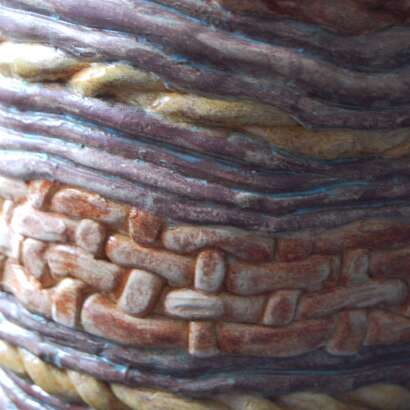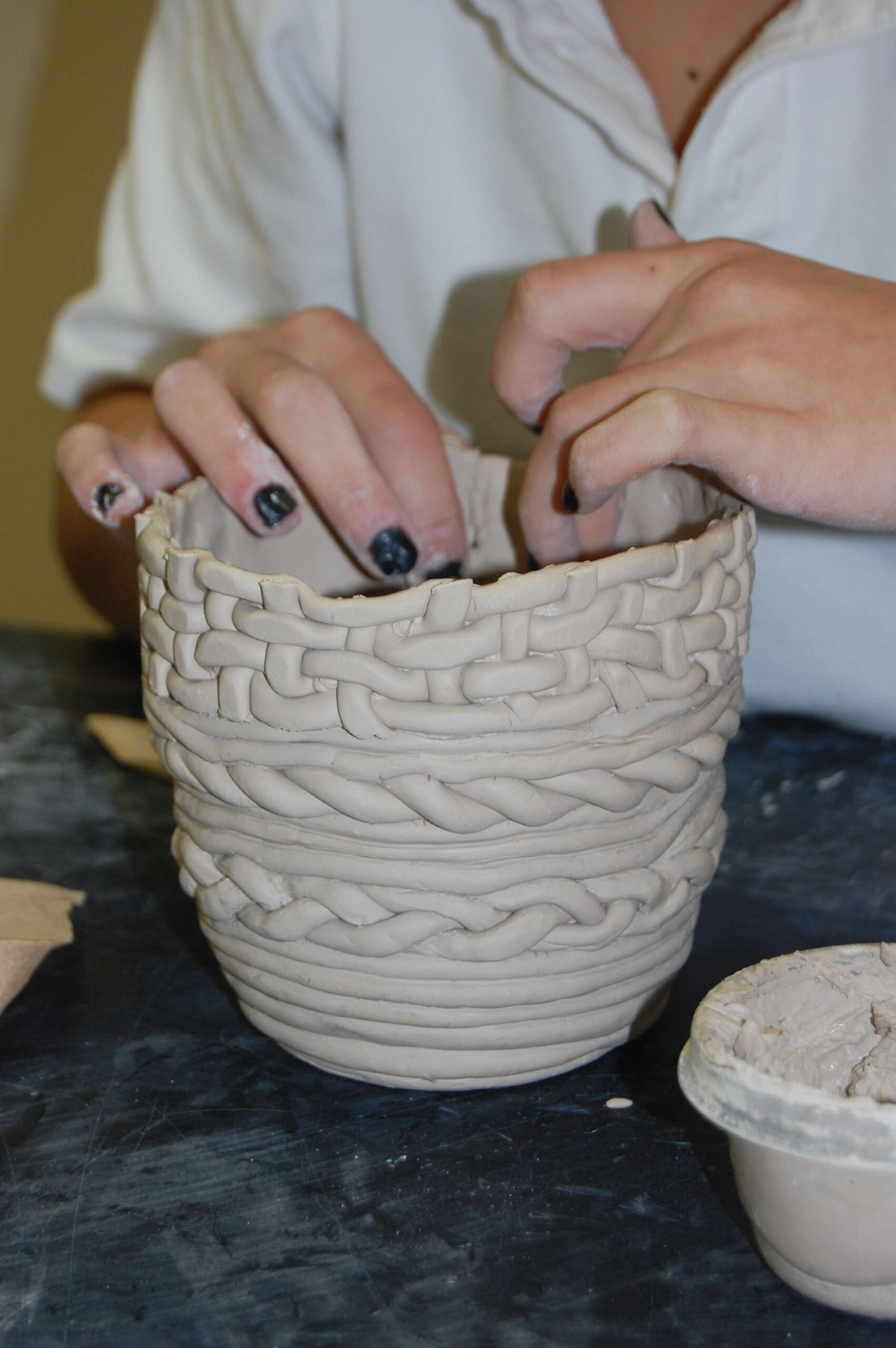
Grade Level
7-8, 9-10, 11-12Duration
about 15 classes, 45 minutes long
Materials
Clay (I just used a basic white low fire earthenware clay), slip, surface to work on (I use canvas), basic clay handbuilding tools, particularly a clay fettling knife.
Media
Clay
Lesson Objectives
To create a symmetrical coil pot displaying good craft and a wide variety of decorative coils.
Introductory Activity
Assuming students have some experience with clay including slipping and scoring, you can move right into introducing students to making coils and basic construction. Teacher should demonstrate how to make a coil and students should practice rolling coils for a period. Some students come by in naturally, and others will struggle. All will get better with practice and even those students who have rougher looking coils can still manage to build a pot, although with a more “rustic” look.
Also spend some time looking at decorative coil pot examples and shapes of these pots.
I have students draw the shape of the pot they want and create a template (see supporting images). I also have a minimum height and width requirement. I flex these requirements depending on the individual student’s needs. Often this depends on their rate of speed and detail.
Lesson Process
Students can start their pot in a variety of manners, with a pinch pot, with a wheel thrown rounded base, or with the coil itself. It is teacher preference for the need to slip and score. If clay is soft, the teacher may simply show students how to blend the inside of the clay pot frequently. Coil pots are notorious for breaking, even after firing. Blending the coils on the interior will give you the best of both worlds. They will have strength and the beauty of the coils as well. It can also make the pot more likely to be able to hold water. Sometimes a student may opt to leave spaces decoratively, and if so I encourage students to think about functionality, sometimes opting to not leave spaces until the top portion of the vase.
Student can hold the negative of their template up to the vase frequently to help plan their route. To go straight up, they simply put the coil on top of the previous. To swell outward, you put the previous coil on the outer edge. To bring it in, place the new coil towards the inside edge.
Once the base is created, students can think about getting decorative with their coils. There is a wisdom in thinking about the complexity of the shape, the size the class is shooting to achieve, and to balance that with the type and amount of decoration. Often I have students become so involved in the coil they end up with a simple cylinder and not what they originally considered. But even a cylinder can be transformed by angling in, or out at the top. But, they may consider what their priority is to be- the form or the decoration or a balance of both!
Vocabulary
clay, coil, slip, wedging, blending. slip and score, lip, rim, neck, shoulder, body, walls, foot, baseResources
rolling a coil – Google Search
How to Roll a Clay Coil – 12 Tips for Making Perfect Coils
Author & Website/Blog
Supporting Images








